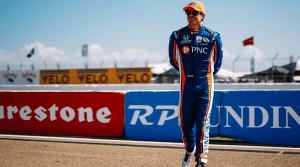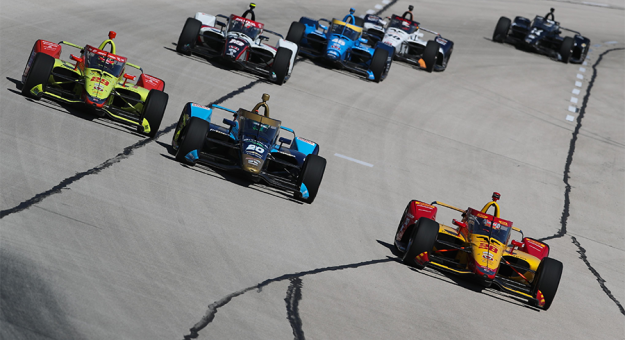FORT WORTH, Texas — It won’t be a return to pack racing but aerodynamic changes to the Indy cars should create more action in Sunday’s PPG Indy 375 at Texas Motor Speedway.
IndyCar officials have introduced some changes to the floor of the Dallara chassis that widens it, along with the addition of barge boards to the undertray.
A barge board is the strip that runs along the bottom of the car similar to the strip that runs lengthwise on the underside of a boat to create less resistance and cut through the water.
The same concept that is used on a boat is used on an Indy car to help it slice through the air.
The intent is to provide more downforce, allow the cars to race closer together and create more passing opportunities at the 1.54-mile, high-bank oval.
“It will bring everybody closer this year,” defending race winner Josef Newgarden of Team Penske told SPEED SPORT. “You are getting more downforce on the cars this year. The floor will be more full. Instead of trimmed sidewalls, we have the ability to run the full sidewalls. That will add quite a bit of downforce.
“Everyone is going up on loads and that will bring everybody closer together. With more increased running on the second lane, maybe even a third lane, the potential to have more grooves on the track is higher and that is what everyone is looking for.”
The holes on the floor that keep a car from going airborne when it gets sideways are still there, but the full width of the sidewalls will be utilized.
Over at Chip Ganassi Racing, Scott Dixon is a five-time winner at Texas Motor Speedway including back-to-back victories in 2020-’21.
His first race at Texas was in 2003 and has gone from the days of wild pack racing to single-file and spread out.
He believes the new combination may create closer competition.

“It’s definitely more downforce in the 200-to-300-pound mark,” Dixon explained. “You have the full strakes on the underwing. There might be a couple of other things.
“I think previously we had trimmed sidewalls and strakes; I think it’s a pretty big adjustment as far as adding downforce to the car for the race.
“With the addition of maybe not having a fresh amount of whatever the NASCAR kind of surface stuff is on top will definitely change it as well. All three of those changes should make, one, the second lane a little more usable, which will definitely tighten up the pack, and ultimately make it a lot racier for everybody.
“I think for the drivers you just hope it doesn’t become a pack race. I don’t think it’s going to be that extreme.”
The races at Texas Motor Speedway generally put on a great race, but in recent years the attendance has dropped off dramatically. In 1997, an announced crowd of 129,000 witnessed the first IndyCar race on the track and for the next 15-20 years, it continued to draw very good crowds.
But last year’s early-morning start (11:30 a.m.) was attended by less than 10,000 fans.
Penske Entertainment, race sponsor PPG and Texas Motor Speedway have created some promotional opportunities for this event. TMS and IndyCar officials told SPEED SPORT there is an uptick in attendance but won’t say how many fans they are expecting.
Newgarden believes it’s vitally important that Texas Motor Speedway remain on the schedule for the series because it needs oval races, especially before the annual Indianapolis 500.
The PPG 375 is the only oval race before the 107th Indianapolis 500 on May 29 at the Indianapolis Motor Speedway.
“Certainly, the diversity of our schedule is critical to the DNA of IndyCar racing,” Newgarden said. “You have to have a great mix of track types. Texas have historically has been a very IndyCar-centric track. It has gone through its challenges over the last years with the track reconfiguration, some of the compounds that have been laid down, but I think we have made great progress.
“Last year was a much stronger event, was fun to watch and obviously a thrilling finish. This year has potential to be even more competitive and close with the package change we have aerodynamically.
“It’s integral to keep the diversity right on our track count. Texas is important to that.”
Newgarden and the other 27 drivers that will make up the 28-car field for Sunday’s race will experience a thrill show at Texas Motor Speedway.
“The track gets your attention,” Newgarden said. “It demands your attention. It’s very on-the-edge to drive an Indy car there especially on the limit, not just for a lap, but for the entire race in close quarters with other cars.
“It is hair-raising. You have to be on it. You can’t miss a lap. That’s what it demands of you.”
